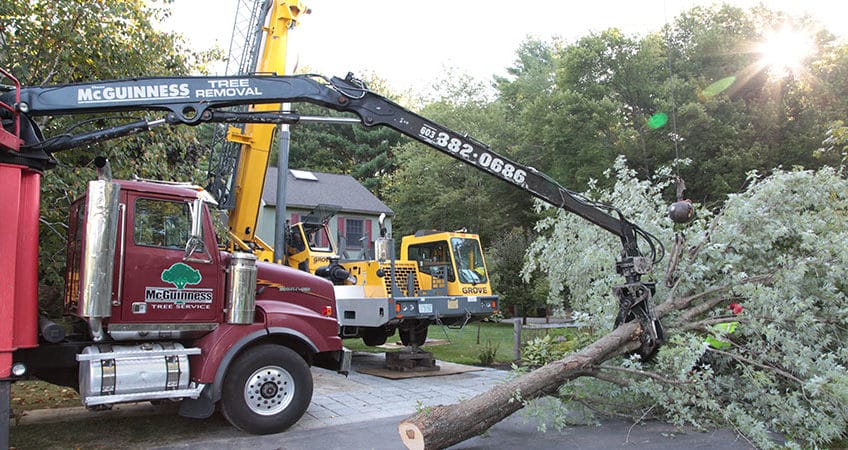Large trees are often old trees and can present serious dangers to your home and property. When your larger trees show signs of disease, decay or stress contact a New Hampshire tree service firm and ask about crane removal. Depending on how the contractor handles the process, it can solve your landscaping issue with minimal impact.
Stage 1 – Assessment
Your tree services contractor will need to visit the site to assess the condition of your tree(s) and the space available. As you can imagine, cranes require quite a bit of room for set up and operation.
Be aware that the crane needs a stable surface for set up and clear boom access to the tree. Branch and trunk size, root system and the condition of the surrounding landscape are also taken into account during this initial stage.
Stage 2 – Cutting
Once the contractor has chosen a place to set up the crane and any other required tree removal equipment (such as chippers), the cutting process begins. Smaller limbs that may hinder the main lifting are trimmed or removed entirely. They can be fed into an on-site chipper or carted off for wood recycling.
When all is clear, the main trunk is secured to the crane. Final cutting takes place at the base of the trunk and a trained crane operator removes the large tree in one precise, yet powerful movement. Crane removal is often referred to as “plucking” and remains one of the most efficient methods of large tree removal available.
Stage 3 – Stump Removal
Once the tree has been removed to the chipper or dump trailer, all that’s left on your property is a stump. Many tree service companies can handle stump removal for you, completing the process and leaving a clean slate on your lawn.
Stump removal products take time, while the use of chain saws and an industrial stump grinder make short work of the project. Talk to your contractor about costs and scheduling for an entire package, including assessment, crane removal and stump grinding. Reclaim your New Hampshire property with the help of local tree professionals.

